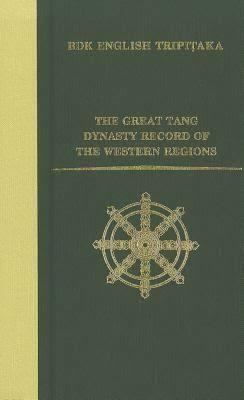9 /10 1 Votes
Traditional Chinese 大唐西域記 Hanyu Pinyin | 4.5/5 Goodreads Simplified Chinese 大唐西域记 Wade–Giles Ta T'ang Hsi-yü Chi Editor Bianji | |||||||||||||||||||||||||||||||||
 | ||||||||||||||||||||||||||||||||||
Similar India books, Historical geography books | ||||||||||||||||||||||||||||||||||
The Great Tang Records on the Western Regions is a narrative of Xuanzang's nineteen-year journey from Chang'an in central China to the Western Regions of Chinese historiography. The Buddhist scholar traveled through the silk road regions of Xinjiang in northwest China, as well as neighboring areas in Central Asia and south China.
Contents
The book was compiled in 646, describing travels undertaken between 626 and 645. Bianji, a disciple of Xuanzang, spent more than one year editing the book through Xuanzang's dictation.
Overview
The book contains more than 120,000 Chinese characters and is divided into twelve volumes, which describe the geography, land and maritime transportation, climate, local products, people, language, history, politics, economic life, religion, culture, and customs in 110 countries, regions and city-states from Xinjiang to Persia, Tajikistan, Uzbekistan, Pakistan, India, Bangladesh and Sri Lanka, among other regions.
Importance
Today, the text is of a great value to modern historians and archaeologists. The Records is an important document of Central Asia during the early seventh century, as it provides information of a Buddhist culture existed in Afghanistan during that time and the earliest textual evidence for Buddhist sculptures at Bamiyan. The text also has equal importance in the studies of India, and archaeologists have been using it to fill in certain gaps in Indian history. The book is known for having "exact descriptions of distances and locations of different places", and has served as a guidebook for the excavation of many important sites, such as Rajagrha, the Temple at Sarnath, Ajanta, the ruins of the Nalanda Monastery in Bihar and the ruins of Vasu Bihar of ancient Pundra City. The text inspired Journey to the West, a Chinese novel published in the Ming Dynasty.
